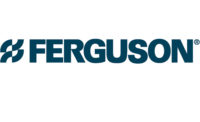Ferguson’s parent company Wolseley plc recently announced its financial results for the 2015 fiscal year.
Ferguson increased its revenue 12%, ending the year with sales of $13 billion, up from $11.6 billion last year. The company was 9.6% ahead of last year on a like-for-like basis, which measures growth of Ferguson’s existing stores or branches that have been open for at least one year. As well, trading profits were ahead 19.8% over last year. Ferguson’s trading margin reached a record high of 8.2%.
“We have concluded another great year and a strong performance,” Ferguson CEO Frank Roach said. “The outcome is a direct result of our associate’s collective efforts and commitment to providing world-class customer service while driving change and continuous improvement.”
Market growth was about 5% and Ferguson outperformed the market in almost all of its business segments, the company noted. Blended branches (Ferguson locations that serve both residential and commercial customers) grew across all major regions, benefiting from growing markets and continued market-share gains. Waterworks grew strongly and gained market share, and the HVAC, Fire and Fabrication and B2C e-commerce businesses all generated good growth, Ferguson added.
Ferguson closed on 13 acquisitions during the fiscal year. The acquisitions spanned coast-to-coast and multiple business types including waterworks, HVAC and plumbing distributors, in addition to e-commerce companies, and appliance and lighting showrooms.
In other company news, Ferguson announced a partnership with Fujitsu to distribute the Airstage variable-refigerant flow system in the Northeast. The partnership includes exclusive distribution in the Baltimore, Washington, D.C., and Philadelphia markets as well as distribution in New York City and New Jersey.
“The cost of utilities in the Northeast are some of the highest in the country,” said Matt Coley, business development manager of Ferguson’s’ Northeast VRF Division. “The efficiencies of VRF maximize equipment output and the return on investment can be realized much sooner than traditional HVAC units due to reduction in operating costs.”




